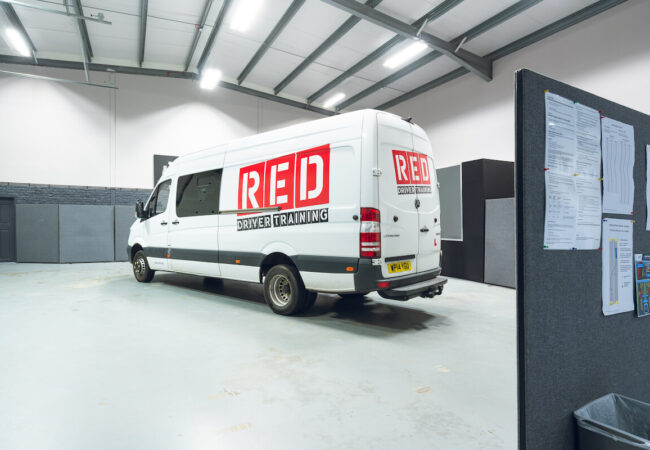When you pass a standard UK driving test, you’ll be awarded with a Category B driving licence. This lets you drive various types of vehicles and is a prerequisite for obtaining a HGV licence. Here’s a breakdown of what you are allowed to drive with a Cat B licence:
You can operate cars and other vehicles designed to carry up to 8 passengers, excluding the driver. This includes cars, vans, and motorhomes, as long as the maximum authorised mass (MAM) does not exceed 3,500 kilograms (3.5 tonnes).
You can ride motorcycles with an engine capacity of up to 125cc, provided the vehicle doesn’t exceed 11 kW (14.6 bhp) power output. You can also operate motor tricycles with a power output of up to 15 kW (20 bhp).
You are permitted to ride mopeds and scooters with an engine capacity of up to 50cc and a maximum speed of 45 km/h (28 mph). It’s worth noting that if you passed your driving test before 2001, you can ride a moped without L-plates and are not subject to the 45 km/h speed limit.
You can drive agricultural vehicles, including tractors, as long as they are being used for agricultural, horticultural, or forestry purposes and are not used for carrying goods or passengers for hire or reward on public roads.
If you passed your test before 1st January 1997, you have greater flexibility and are allowed to drive a vehicle and trailer combination up to 8,250kg MAM, and a minibus with a trailer over 750kg MAM. It’s important to remember that while your standard UK driving licence allows you to operate the vehicles mentioned above, there might be additional requirements or restrictions depending on the specific circumstances, such as age restrictions for certain vehicle types or additional training requirements for specific categories.
If you intend to drive vehicles outside the scope of a standard Category B licence, such as large goods vehicles (LGVs), buses, or motorcycles with higher engine capacities, you will need to obtain the relevant additional licences.

Obtaining a Category C1 licence opens up opportunities for driving medium-sized goods vehicles, including delivery vans, small transporters, light recovery vehicles, horseboxes and even ambulances. These vehicles typically have a maximum authorised mass (MAM) between 3.5 tonnes and 7.5 tonnes.
Drivers who passed their driving test before 1997 will automatically get a Cat C1 licence but driver training for familiarisation is strongly recommended before driving a C1 vehicle even if you have a licence entitlement. If you passed your Cat B test after 1st January 1997 you will need to take additional Cat C1 training and pass a test to acquire a licence.
It’s worth noting that a Category C1 licence does not permit you to drive larger vehicles, such as articulated lorries or heavy goods vehicles exceeding the 7.5-tonne weight limit. If you wish to operate vehicles beyond the Category C1 weight range, you would need to pursue higher-level licences, such as Category C or Category C+E.
With a Category C (Class 2) licence, you are authorised to drive heavy goods vehicles (HGVs). This licence allows you to operate vehicles exceeding 7.5 tonnes (7,500 kilograms) MAM. Here’s a list of vehicles you can drive with a Category C licence:
In order to obtain a Cat C licence, you will need to:
It’s important to note that while a Category C licence grants you authorisation to drive HGVs, certain specific circumstances and vehicle configurations may require additional licences or endorsements. For example, if you want to drive articulated lorries with a trailer exceeding 750kg, you will need to obtain a Category C+E licence.
Contact us to find out more about RED’s intensive 5 day LGV HGV Cat C (Class 2) Rigid Licence Acquisition training courses.

A Category C1+E driving licence allows you to drive a Category C1 vehicle (medium-sized goods vehicle) with a trailer attached. The “+E” signifies the additional entitlement to tow a trailer behind a Category C1 vehicle. While the maximum authorised mass (MAM) of the trailer you can tow with a Cat C1+E licence is not limited, the combined MAM must not exceed 12 tonnes.
It’s important to note that the Category C1+E licence allows you to tow trailers for personal use or non-commercial purposes. Towing trailers for hire or reward is not permitted with this licence.Here at RED, we are pleased to offer an intensive two day training course for anyone wanting to drive a C1+E medium goods vehicle and trailer. Before you start, you’ll need to have passed a light goods vehicle (LGV) medical and LGV theory test when doing a C1 or C course.
A Category C+E licence, also known as a class 1 test, allows you to drive a Category C vehicle while towing a trailer over 750kg. The Category C+E licence allows you to tow trailers with no maximum weight limit. However, the combined MAM of the vehicle and trailer must not exceed the specific limit set by the manufacturer or legal requirements.
The Category C+E licence is typically associated with driving articulated lorries or tractor-trailer combinations. Gaining a Cat C+E HGV licence is achieved via stage testing and before you can take a Cat C+E test you must have already passed the Cat C practical test. You can find out more about our Cat C+E (Class 1) Licence Acquisition training here.
If you wish to use your licence commercially, you’ll also need a Driver Certificate of Professional Competence (CPC). This is a legal requirement for all HGV and PCV (passenger carrying vehicles) drivers in the UK and Europe. It’s designed to ensure that professional drivers have the necessary knowledge and skills to safely operate HGVs on the road.
To obtain a CPC you’ll need to undertake additional training as part of your LGV / HGV driving course. This training includes modules specifically designed to cover the topics required for the Driver CPC qualification including; driver hours and tachograph regulations, first aid, vehicle safety, and advanced driver skills.
Once you have a CPC, you must complete 35 hours of periodic training every five years to maintain it. This ongoing training ensures that you stay up-to-date with current regulations, advancements in technology, and best practices within the industry. The training can be spread across the five-year period and is intended to enhance your HGV driving skills and maintain road safety standards. You can find out more about CPC training with RED here.

The course usually starts with theoretical instruction covering topics such as highway code, traffic regulations, and safe driving practices specific to HGVs. This includes learning about vehicle systems, handling techniques, and understanding potential hazards on the road.

The practical driving component is a crucial part of HGV driver training. It involves hands-on experience behind the wheel of an HGV under the guidance of a qualified instructor. You’ll learn various driving techniques, including manoeuvring, changing lanes, reversing, and handling different road conditions.

You will become familiar with the specific HGV you will be driving during the training. This includes understanding the vehicle’s controls, instruments, and safety features. It’s important to learn how to perform pre-trip inspections to ensure the vehicle is in proper working condition before each journey.

HGV driver training emphasises hazard perception and defensive driving techniques. You’ll learn how to anticipate and respond to potential dangers on the road, such as blind spots, vulnerable road users, and challenging road conditions. This helps develop a safety-conscious mindset while driving a HGV.

Throughout the training, you’ll undergo practical skills assessments to evaluate your driving proficiency and ensure you meet the required standards for HGV drivers. These assessments may include both on-road driving tests and off-road exercises to demonstrate your competence in vehicle control and manoeuvring.
Here at RED, we specialise in light and heavy goods vehicle driver training. Our intensive courses typically last for 4 or 5 days and include the practical test on the final day of your course. You’ll work one-to-one with a qualified RED instructor to cover everything you need to pass your practical driving test.